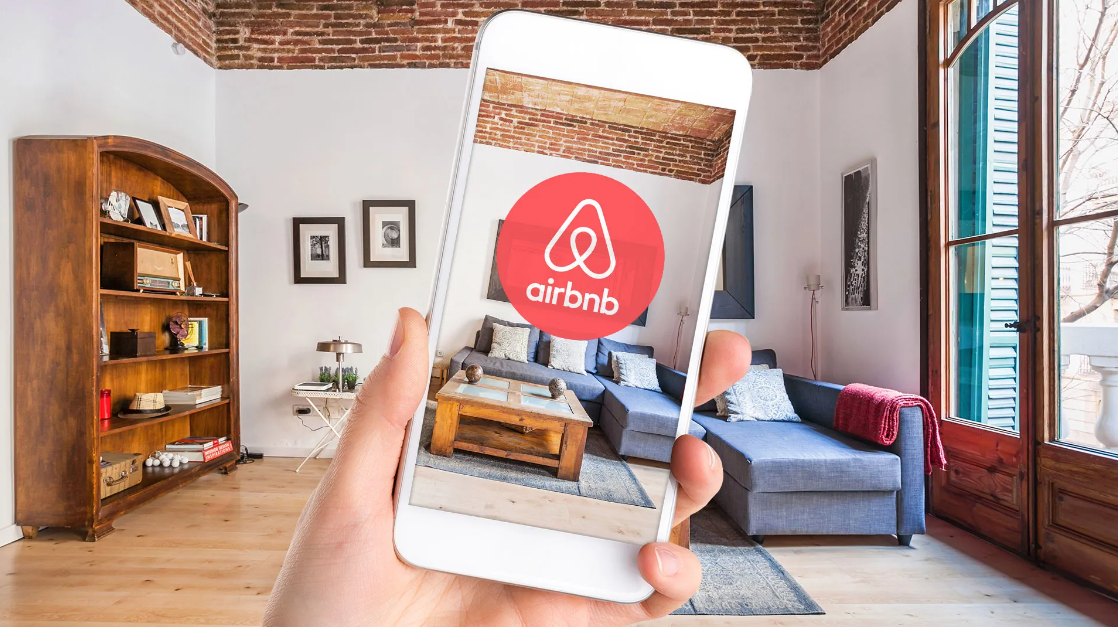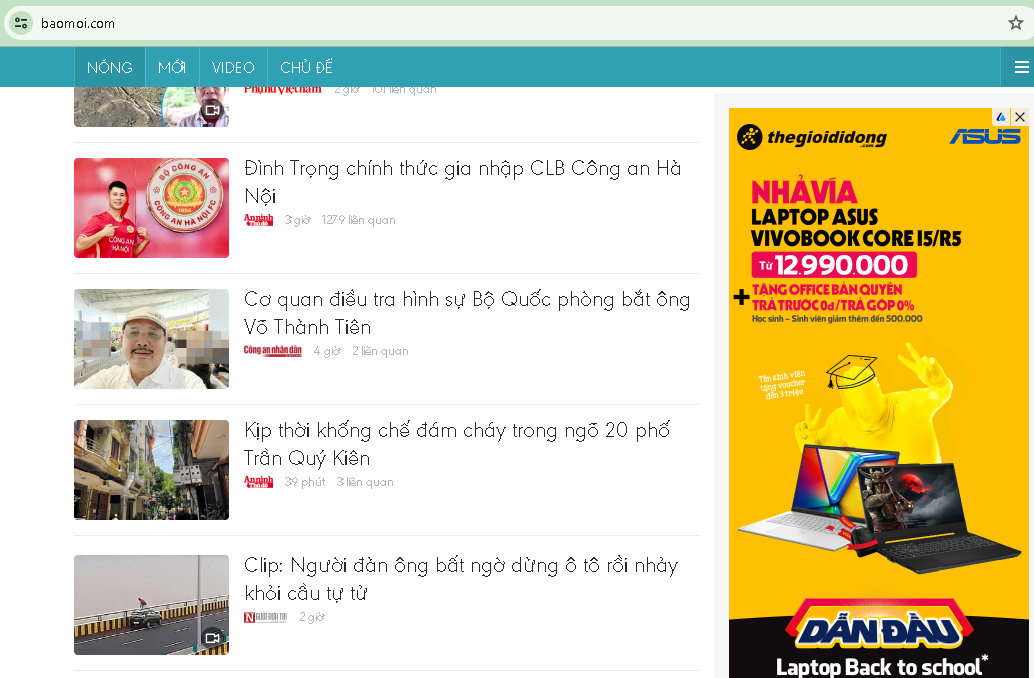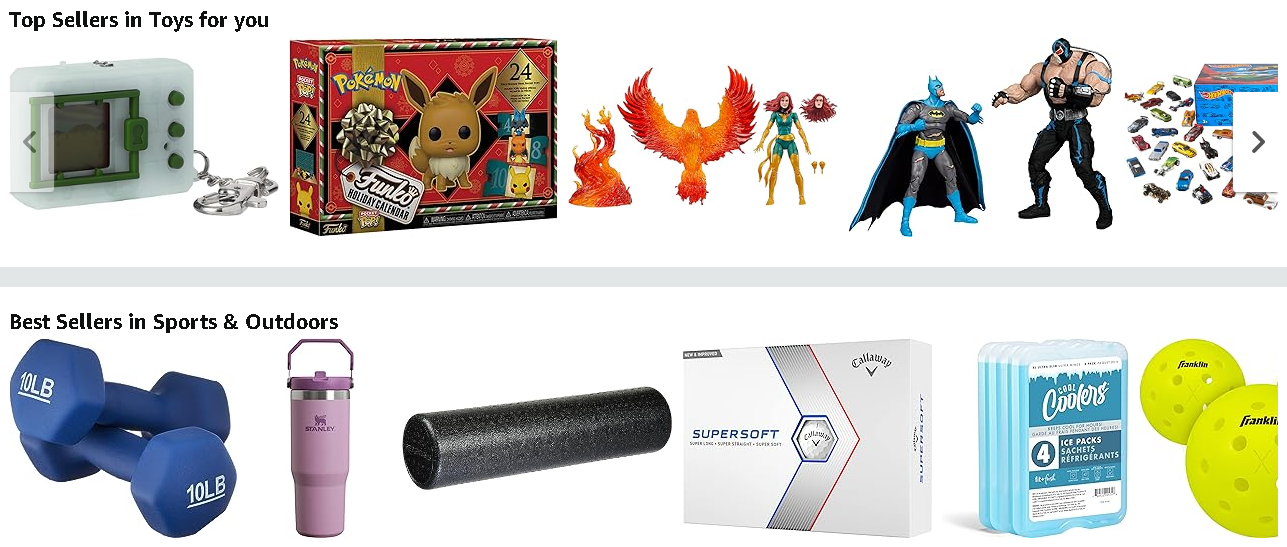Article Content:
The Importance of UGC in Marketing
The Impact of UGC on Trust
The Rise of UGC
The Importance of Updating UGC Trends
9 Important UGC Trends for 2024
In a world flooded with information, how can a brand stand out from its competitors? The answer lies with the customers themselves. According to a survey, 92% of consumers trust recommendations and reviews from friends and family over traditional advertisements. Therefore, UGC (User-Generated Content) has become a crucial component in brand marketing strategies. The article “All About UGC 2024: The Secret to Turning Customers into Brand Content Creators” highlighted the importance of UGC in building relationships with consumers. This article will delve into the UGC trends to watch in 2024 to maximize UGC's potential in marketing.
The Increasing Importance of UGC in Marketing
Instead of expensive and flashy advertising campaigns or celebrity endorsements, in 2024, it seems we just want to see ordinary people on our screens. The explosion of UGC on social platforms like Instagram, TikTok, and YouTube is meeting everyone's needs.
If we consider the numbers, we can clearly see why UGC has become an essential tool in any marketer's toolkit:
- The global UGC content market is currently valued at $5.36 billion but will increase to $32.6 billion by 2030. (Grand View Research)
- 84% of consumers are more likely to trust a brand if they use UGC in their marketing campaigns. (EnTribe)
- This trust translates into revenue. According to the same survey, 77% of consumers are influenced in their purchasing decisions if a brand uses UGC.
- This shows a significant shift in public taste and the type of content they want to consume. 34% of consumers believe "too much self-promotional advertising" is a major factor in their dissatisfaction with brands on social media. (Hootsuite)
- People now find UGC to be 9.8 times more impactful than influencer content. (Nosto)
- They even prefer it over branded content. A report shows that UGC is 2.5 times more authentic than brand-produced content.
- 55% of consumers of all ages now trust UGC more than other marketing strategies.
The more we delve into these trends, the clearer it becomes—people don't just like consuming UGC. They are starting to trust brands that use ordinary people to tell their stories... and that trust can turn them into customers.
 |
The Impact of UGC on Consumer Trust
Authentic Endorsements from Real Users
User-Generated Content (UGC) provides authentic and trustworthy testimonials from other consumers, which is crucial in building trust. In an era where traditional advertising is increasingly questioned, UGC stands out for its transparency and sincerity. According to a study by Stackla (2023), 79% of consumers say they trust UGC more than brand advertisements.
A survey by TurnTo Networks (2023) revealed that 79% of consumers consider reviews from other users a crucial factor in online shopping. For example, when looking for a product on Amazon, consumers often review reviews and images from those who have purchased the product. Positive reviews and real consumer images make the product more trustworthy than manufacturer descriptions.
The Ability to Create Genuine Connections
UGC creates a genuine connection between brands and consumers. When a brand shares user-generated content, it shows recognition and appreciation for its customers. This not only creates a sense of respect but also encourages other consumers to participate and create content.
Starbucks regularly shares customer photos with their drinks on social media platforms. A famous campaign is #RedCupDay, where customers take photos of their coffee cups with festive red cups and share them on Instagram. These images create a connection between Starbucks and customers and encourage others to join the campaign, enhancing interaction and brand loyalty.
 |
Building Trust Through Transparency
When consumers see that a brand is willing to share user-generated content, it demonstrates the brand's transparency and confidence. Brands not only control their advertising content but also accept and share real consumer feedback and experiences.
Glossier, a renowned cosmetics brand, has used UGC as a critical part of its marketing strategy. Instead of relying solely on traditional advertising, Glossier encourages customers to share photos and videos of how they use the brand's products on social media. The company then shares this content on its website and social media channels, demonstrating transparency and building trust with consumers.
Enhancing Credibility Through Content Diversity
UGC offers a range of perspectives and experiences, helping consumers get a comprehensive view of a product or service. When they see different users having positive experiences, consumers are more likely to trust the product.
Nike frequently uses UGC in its advertising campaigns, such as the #JustDoIt campaign. The brand encourages consumers to share videos and images of their sports activities. When consumers see thousands of videos and images from people using Nike products in real life, they feel the product is quality and trustworthy.
Serving as a Social Proof Element
UGC acts as a social proof element, helping consumers confirm their purchasing decisions based on others' actions. When they see many others choosing and appreciating a product, consumers feel validated in their decision and more reassured.
Airbnb leverages UGC through its user review and feedback system. When searching for accommodation, users rely not only on the host's description but also on reviews and images from previous guests. Positive feedback and reviews from other customers help build trust and encourage new consumers to book.
 |
The Rise of User-Generated Video Content
Platforms like Instagram Reels, TikTok, and YouTube Shorts lead the UGC (User-Generated Content) trend in 2024. And the common thread among these platforms is—video is the primary content form.
- 56% of marketers reported to HubSpot that short-form video is their top investment for 2024. (HubSpot's 2024 Marketing Status Report)
- Destination marketers will prioritize short-form videos on Instagram Reels, TikTok, and YouTube Shorts this year. (CrowdRiff's 2024 Trends Report)
- 98% of destination management organizations will spend money to distribute creator content through Instagram ads.
- 91% of active users watch videos on Instagram weekly.
- 49% of Gen Z uses Instagram Stories to discover new products and services.
- 78% of destination management organizations prioritize content on Instagram Reels in 2024.
- Other platforms like YouTube Shorts are catching up with Instagram Reels in popularity. The platform is now viewed by over 2 billion users monthly. (YouTube)
- Reels seem to live up to the prediction that it will become "the future of the Instagram feed," with about 20% of total viewing time now spent on this feature. (Business Insider)
.jpg) |
The Importance of Updating UGC Trends
Keeping track of changing trends is not just a strategy—it's a necessity. Maintaining a leading position helps brands stay relevant, impress their audience, and leverage the latest tools and techniques. Here's why staying on top of trends is more important than ever:
Adaptability
In the world of UGC, where trends emerge and evolve as quickly as a touch of a button, adaptability is crucial. To remain relevant and appealing, businesses must constantly adjust their strategies and approaches.
Connection and Community Building
Keeping up with trends helps businesses better connect with their communities. This creates a positive interactive environment and builds customer loyalty when they feel heard and their needs are met.
Maximizing Brand Visibility
New trends often come with increased brand exposure. By catching up with new trends, businesses can optimize their brand visibility on social platforms, attracting more attention and expanding their customer base.
Integrating Diversity
Diversity in content and approach is one of the essential factors in attracting today's audience. Keeping up with trends ensures that the brand reflects the diversity and inclusivity of the community it serves.
Maintaining Authenticity in an Influencer-Driven World
In a world increasingly dominated by influencers, maintaining authenticity and differentiation is crucial. Following and applying trends helps businesses maintain the distinctiveness of their brand while keeping it genuine and trustworthy in customers' eyes.
In the bustling world of UGC, where trends change as quickly as a click, the secret to success is not just keeping up but leading. It's about predicting the next trend, approaching it subtly, and ensuring the brand is not just an observer but a pioneer in the vast ocean of user-generated content.
9 Important UGC Trends for 2024
1. The Influence of Social Media
Social media remains the most crucial platform for creating and sharing UGC content. Platforms like Instagram, TikTok, and Facebook enable users to easily share images and videos, creating a robust interactive environment. The prevalence of UGC on these platforms contributes to increased consumer trust in brands, as they rely more on real consumer experiences than traditional commercial advertising.
Sharing on social media is not just about interaction; it brings significant benefits:
- Awareness: Enhance brand awareness within the community.
- Recognition: Build recognition and trust from customers.
- Popularity: Increase brand popularity through organic sharing.
- Desire: Stimulate customer interest and desire.
- Fear of Missing Out (FOMO): Create a sense of urgency and drive customer participation.
However, the most valuable thing is when customers share positive experiences—this is the foundation of your community. This community not only creates intimate connections but also attracts potential customers to an exclusive family.
Case Study: Calvin Klein’s #MyCalvins Campaign
Calvin Klein launched the #MyCalvins campaign to encourage consumers to share photos of themselves wearing Calvin Klein products, from underwear to jackets. The campaign used the popularity of celebrities and influencers like Kendall Jenner and Justin Bieber and user-generated content to create a powerful and attention-grabbing advertising campaign.
Instagram users shared photos of themselves wearing Calvin Klein underwear with the hashtag #MyCalvins. These images were shared on the company's social media accounts and became a diverse advertising source from consumers worldwide.
=> Results:
- Calvin Klein has attracted over 100,000 images using the #MyCalvins hashtag.
- With over 600 million people participating in this campaign, this advertising strategy not only expanded the brand's reach but also helped the company increase its revenue by 13% in 2023.
2. Video Becomes the King of Content
UGC content is being integrated into e-commerce websites, helping consumers visualize products in a more realistic context. Brands are using images and videos from customers to illustrate how products work or are used.
From viewing an ad to making an immediate purchase, the next phase that needs to be mastered is the landing page where the user will go to complete the transaction. This is where the use of UGC (user-generated content) beyond your advertising campaigns becomes extremely important.
Amazon and e-commerce stores need to leverage UGC to showcase their products through other customers using and enjoying the products. Business owners are increasingly reaching out to customers to provide a free gift or discount code in exchange for customers using the product and adding their reviews.
|
Example on Amazon |
 Example on the websites like baomoi.com Example on the websites like baomoi.com |
3. AI & UGC Collaboration (Virtual Influencer)
Many in the industry are not yet aware of the significant change occurring, a change that could reduce the income of influencers by more than 10 times compared to the current level. With influencer marketing campaigns utilizing new deep fake technology, combined with AI and Machine Learning systems, these advanced technologies are about to revolutionize the field by reducing influencer advertising costs while expanding reach. Overall, this will yield a higher return on investment for brands when investing in influencer activities.
Previously, influencer marketing often relied on an individual building a following based on their activities, making others feel like they were missing out on something if they didn't follow, thus building a massive consumer base. This took time, effort, and sometimes a considerable expense.
AI is becoming a powerful tool in creating and managing UGC. AI technology not only analyzes data from UGC but also helps create simulated content, such as Virtual Influencers, to interact with consumers and support marketing campaigns.
Example:
Lil Miquela, a virtual influencer created by AI, has collaborated with many fashion and beauty brands to promote products. The combination of AI and UGC creates a new kind of content that is engaging and can interact directly with consumers.
4. UGC Email Marketing
Email marketing is increasingly integrating UGC content to make email campaigns more engaging and personalized. Using customer images and reviews in emails helps increase open rates and click-through rates.
Integrating UGC into email marketing, applying efforts on social platforms and websites to email campaigns, has never been as powerful as it is today. Building an immediate connection with email recipients, creating trust between businesses and customers, preventing them from hitting the spam button, and boosting their confidence to visit the website and make transactions.
Presenting in an auto-play video or even a GIF that shows a normal person using the product or service and achieving great results from shopping can significantly increase the click-through rate of the email.
Some benefits of using UGC in email marketing:
- Building Trust: Creating confidence from the recipient's side.
- Authenticity: Providing authentic and reliable content.
- Social Proof: Showing evidence from actual users.
- User Engagement: Encouraging interaction and participation.
- Increased Engagement/Click-Through Rate: Enhancing click-through rates and engagement.
As long as landing pages and other elements are optimized, this will lead to increased sales.
Example:
Travel brand Airbnb sends emails featuring images and stories of customers who have stayed at unique locations. These emails not only provide valuable information but also encourage recipients to share their experiences on social media.
5. User-Generated Informative Content (Blog)
User-generated blogs offer authentic insights into products or services and contribute to building trust with potential customers. This content often contains real-life experiences and detailed reviews that brands can use to attract customers.
Example:
Technology brand Canon encourages users to write blogs about photography and video techniques using Canon products. These posts not only help other consumers learn about the products but also create rich content for Canon's marketing campaigns.
6. UGC Podcasting Partnerships
When mentioning podcasts, most people immediately think of popular shows like "Diary of a CEO" or "Joe Rogan." However, these podcasts are self-promoted by influential individuals and cannot be considered UGC (user-generated content) for podcasts.
Using UGC for podcasts includes seeking out other content creators who can generate interest in any podcast online and then promoting these contents on various social platforms to increase the podcast's presence.
To use UGC for podcasts is to enhance the number of reviews for the podcast, to build trust when users are browsing platforms like Spotify or YouTube. Having many positive reviews will help increase the click-through rate significantly.
Featuring content creators on podcasts or mentioning them at any time can also increase trust not only between businesses and the audience but also with creators, making them more likely to continue talking about the brand.
Example:
Organic food brand Whole Foods partnered with podcasters to create shows about nutrition and cooking, using consumer stories and feedback. These podcasts not only help build a community but also provide useful information to listeners.
7. Immersive UGC in Virtual Reality (VR)
The world of virtual reality (VR) is breaking the traditional boundaries of user interaction. In 2024, the landscape of virtual experiences is changing at an unprecedented rate. Users are no longer satisfied with standard images and text but crave a deeper and more engaging connection in virtual spaces.
But don't worry, the rise of User-Generated Content (UGC) is transforming the VR experience in 2024. Imagine: users are not just consuming content but actively contributing to the virtual landscape, shaping their own stories in the digital universe.
Imagine a VR experience where another user, not a scripted character, shares their journey with a product or service. This authentic representation serves as a testament to trust, creating an immediate connection between the virtual world and the user. The days of passive consumption are gone; now users are actively participating, building a communal canvas of shared experiences.
Example: Gucci and the "Gucci Garden Experience" Project
Gucci Garden Experience is a virtual reality exhibition organized by Gucci in Florence, Italy. This event is not just a traditional exhibition but integrates VR elements so that attendees can explore a meticulously designed virtual space reflecting Gucci's collections in an interactive environment.
Attendees can use VR glasses to experience different virtual spaces, from product galleries to themed-designed spaces. The galleries in the virtual environment not only provide product information but also allow users to interact with elements in the space, such as changing lighting and colors to view products from different angles.
 |
 |
8. Employee Advocacy Programs
Leveraging user-generated content (UGC) doesn't stop at customers; employees can also become powerful brand advocates. By implementing employee brand advocacy programs, you can turn them into passionate brand advocates. These employees not only use the products or services but also share their positive experiences with the community, thereby enhancing brand credibility and trust.
Passionate employees not only spread the brand message but also create authentic and engaging interactions. When employees share their personal experiences about the company's products or services on social media platforms, the natural spread of this content can draw significant attention and interest from the community. This not only helps increase brand visibility but also builds genuine and lasting relationships with customers.
Example: IBM's "Employee Advocacy" Program
IBM provides training and guidance to employees on effectively using social platforms, from creating quality content to interacting with followers. They also provide articles, images, and videos that employees can easily share.
Thanks to this program, IBM has not only expanded its reach but also created a strong internal brand ambassador network. Employees become active representatives for the brand, contributing to enhancing credibility and creating deeper connections with customers.
9. Safe and Secure UGC Usage
As brands actively harness user-generated content (UGC), ensuring a safe space for users is paramount. Brands need to adopt stringent measures to protect personal data and prevent privacy breaches. This includes establishing clear security policies, monitoring content shared by users, and providing specific guidelines on how users can protect their information when participating in UGC programs.
The use of UGC must be conducted responsibly to ensure a safe and secure online environment. Brands should deploy tools and technologies to detect and prevent harmful or inappropriate content while providing users with easy means to report issues. Ensuring that all personal information is handled and stored securely, as well as respecting users' rights, is essential to maintain trust and protect the online community's safety.
Example:
Instagram has updated and improved its security and privacy tools to ensure user safety when sharing content.
Instagram provides users with the ability to control who can see and interact with their content. Security tools allow users to manage who can view, comment, or share their posts, while also offering options to report and block users with inappropriate behavior.
Instagram has also implemented privacy policies to protect users' personal data, including limiting data collection and usage in ways that are not transparent or without user consent.
UGC trends are constantly evolving and becoming an integral part of brands' marketing strategies. Embracing and applying the latest UGC trends not only helps brands build trust, enhance engagement but also improve the effectiveness of marketing campaigns.
See more:
Everything About UGC 2024: The Secret to Turning Customers into the Brand’s "Content Creators"
"On-Trend" Designing CPG Product Packaging: Pros and Cons?
Virtual Agency - The New "Craze" in the Digital Economy
TRÒN HOUSE

